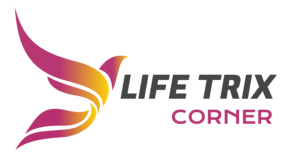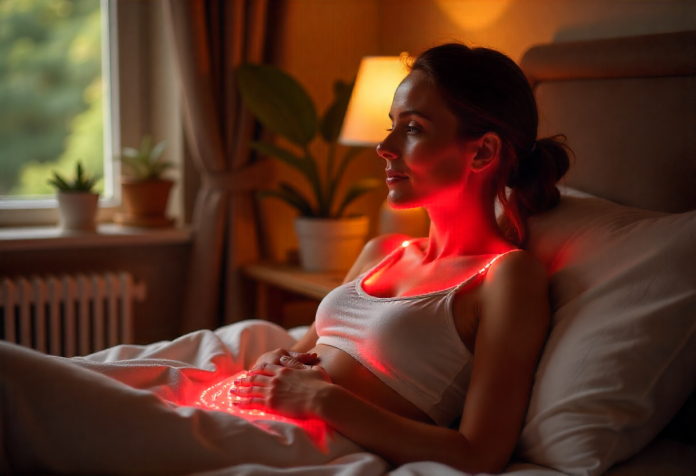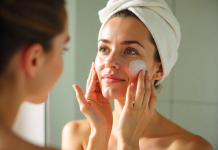Key Takeaway: Red light therapy (RLT) belts offer a noninvasive, drug-free approach to pain relief, tissue repair, and overall wellness by delivering targeted wavelengths of red and near-infrared light directly to the body’s soft tissues.
Introduction
Red light therapy, also known as photobiomodulation, leverages specific wavelengths of red (630–660 nm) and near-infrared (810–850 nm) light to stimulate cellular processes. Traditionally delivered via full-body panels or handheld devices, RLT is now available in flexible belt form for targeted relief on areas such as the back, abdomen, and joints. This article delves into the science, benefits, proper use, safety, and how to choose the right red light therapy belt.
- The Science Behind Red Light Therapy
Red and near-infrared light penetrate skin and are absorbed by mitochondrial chromophores, notably cytochrome c oxidase. This absorption:
- Boosts adenosine triphosphate (ATP) production, fueling cellular repair and regeneration.
- Reduces oxidative stress by modulating reactive oxygen species.
- Triggers nitric oxide release, enhancing microcirculation and oxygen delivery.
Collectively, these effects accelerate tissue repair, reduce inflammation, and alleviate pain.
- Health Benefits
Pain Relief and Inflammation Reduction
RLT belts offer localized relief for musculoskeletal pain (e.g., lower back pain, arthritis). Clinical studies show significant reductions in pain intensity and inflammatory markers after consistent red light exposure over weeks.
Muscle Recovery
Athletes use RLT belts post-workout to decrease muscle soreness and expedite recovery by improving blood flow and reducing lactic acid buildup.
Tissue Repair and Wound Healing
By stimulating fibroblast proliferation and collagen synthesis, red light enhances wound closure and skin repair, making belts useful postpartum or post-surgery.
Improved Circulation
Nitric oxide release widens blood vessels, improving perfusion in treated areas. Enhanced circulation promotes tissue oxygenation and nutrient delivery, aiding recovery.
- Belt Design and Technology
LED Configuration
- Red LEDs (630–660 nm): Optimal for skin surface and shallow tissues.
- Near-Infrared LEDs (810–850 nm): Penetrate deeper tissues (muscles and joints).
High-quality belts combine both wavelengths for balanced treatment.
Flexibility and Coverage
Premium belts use flexible silicone or neoprene with embedded LEDs, allowing contouring to curves (spine, abdomen). Wider belts (12–16 inches) cover large areas; narrower ones (6–8 inches) target joints (knees, elbows).
Control and Customization
Modern designs feature adjustable intensity (e.g., 5–100 mW/cm²) and treatment time settings (5–30 minutes) via built-in or app-controlled interfaces. Programmable sessions ensure consistent dosing.
- How to Use a Red Light Therapy Belt
- Preparation: Clean and dry the skin. Remove clothing from the treatment area.
- Placement: Wrap the belt snugly around the target area, ensuring LEDs are in direct contact with the skin.
- Settings: Select wavelength mode (red, near-infrared, or combined), intensity level, and duration (typical sessions last 10–20 minutes).
- Frequency: For acute pain or injury, daily sessions for 2–4 weeks; for maintenance, 2–3 times per week.
- Post-Treatment: Wipe the belt clean and store in a cool, dry place.
- Safety and Contraindications
Red light therapy belts are generally safe, with minimal side effects. Precautions include:
- Eye Protection: Avoid looking directly at LEDs; use goggles provided by the manufacturer.
- Photosensitivity: Individuals on photosensitizing medications (e.g., certain antibiotics, retinoids) should consult a physician.
- Pregnancy and Cancer: Pregnant women and cancer patients should seek medical advice before use.
- Selecting the Right RLT Belt
When choosing a red light therapy belt, consider:
- Wavelength Mix: Look for belts combining red and near-infrared LEDs.
- Power Density: Aim for ≥ 20 mW/cm² to ensure therapeutic dosage within reasonable session times.
- Coverage Area: Match belt width to your treatment zones.
- Build Quality: Durable, flexible materials with secure LED integration.
- Controls and Portability: Easy-to-use interface, rechargeable battery life of at least 30 minutes.
- Clinical Validation: Seek products with peer-reviewed studies or FDA 510(k) clearance.
- Top Use Cases and Success Stories
- Chronic Back Pain: Users report up to 60% pain reduction after four weeks of daily sessions.
- Postpartum Recovery: Enhanced abdominal tissue healing and reduced diastasis recti symptoms.
- Arthritis Management: Decreased joint stiffness and improved mobility in osteoarthritis patients.
Conclusion
Red light therapy belts blend convenience with the proven benefits of photobiomodulation. By understanding the underlying science, selecting a high-quality device, and following proper protocols, users can harness RLT for pain relief, tissue repair, and overall wellness. As research continues to evolve, these wearable solutions promise to become integral tools in home-based therapy and recovery regimens.















